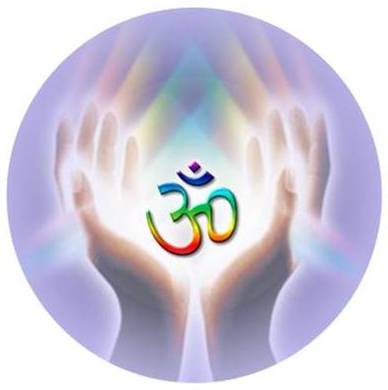Left hand: Place your thumb joint on the nail of the index finger. Do four times a day for 4 minutes or, against acute complaints, until it has an effect.
This mudra is primarily effective when someone with a weak back has engaged in an activity (for example: garden work or cleaning) that has strained the back too much
and caused painful tensions, or when someone has sat too long in the wrong position. Backaches can have a great variety of causes. Most people have waste deposits and signs of wear, but these don't necessarily have to be painful. A diseased organ
whose nerves run through the spinal column can also cause pain.
Continuous mental strain, fears, meals that are too heavy, too little sleep,
and/or too little exercise are other causes of pain.
This mudra can be even more effective in a position that relieves the
back . When doing so, keep the chin pulled in
a bit so that the neck is stretched. This little bit of tension has an effect
down to the small of the back. After just 20 minutes in this position, the intervertebral disks are optimally nourished once again and the metabolism operates in full swing again. Perhaps you can even do this exercise during your lunch break at the office. Then you can get through the entire day without pain. What you think while you do this is also very important, which is why the image and the affirmation are particularly significant in this position.
The Yoga training Teacher










 of beauty, and inner clarity; in the ring finger, there is sense of family, the ability to love, and a feeling of security; initiative, sobriety, and the love of order are found in the middle finger; intellectual faculty, individuality, and striving for power are in the index finger; the will, instinctiveness, and vitality in general are found in the thumb. Further classifications from astrology and palmistry can be found in the illustrations on page 38 and the one below.As you can see, you have "a great deal in your hands" with the mudras. You can take hold of your life with your own two hands and decide what is important to you.
of beauty, and inner clarity; in the ring finger, there is sense of family, the ability to love, and a feeling of security; initiative, sobriety, and the love of order are found in the middle finger; intellectual faculty, individuality, and striving for power are in the index finger; the will, instinctiveness, and vitality in general are found in the thumb. Further classifications from astrology and palmistry can be found in the illustrations on page 38 and the one below.As you can see, you have "a great deal in your hands" with the mudras. You can take hold of your life with your own two hands and decide what is important to you.





 The classification of the chakras with the fingers is not the same in all schools of yoga. The most prevalent classification is shown on the hand illustrated here. But there are also yoga masters who classify the little finger with the root chakra, the ring finger with the sacral chakra, the middle finger with the solar plexus chakra, the index finger with the heart chakra, and the thumb with the throat chakra. It should be noted that only the five chakras found along the spinal column are assigned to the individual fingers.
The classification of the chakras with the fingers is not the same in all schools of yoga. The most prevalent classification is shown on the hand illustrated here. But there are also yoga masters who classify the little finger with the root chakra, the ring finger with the sacral chakra, the middle finger with the solar plexus chakra, the index finger with the heart chakra, and the thumb with the throat chakra. It should be noted that only the five chakras found along the spinal column are assigned to the individual fingers. cise expands the bronchial tubes, opens the lungs, strengthens the heart, and refreshes the mind. Asthmatic patients often cough during this exercise because it loosens the mucus in the bronchial tubes, and heart patients feel an intensified awareness of the heart. Use Middendorf, a leading expert in the field of respiratory therapy, has proved that a direct relationship can be established between the individual
cise expands the bronchial tubes, opens the lungs, strengthens the heart, and refreshes the mind. Asthmatic patients often cough during this exercise because it loosens the mucus in the bronchial tubes, and heart patients feel an intensified awareness of the heart. Use Middendorf, a leading expert in the field of respiratory therapy, has proved that a direct relationship can be established between the individual




